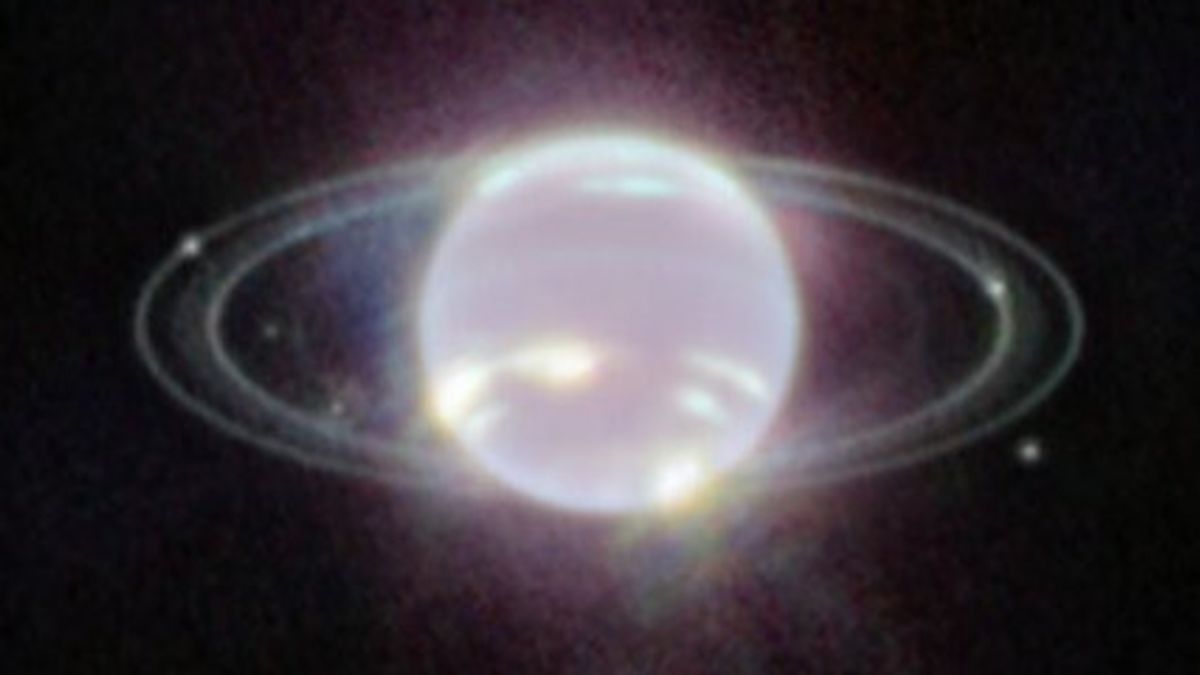JAKARTA - Planet Neptune and its weapons are difficult to detect, but thanks to the James Webb Space Telescope, we can all see it through the latest images revealed by NASA.
"It's been three decades since we last saw this faint and dusty ring, and it's the first time we've seen it in the infrared," said Antourist and interdisciplinary scientist at the Webb Telescope project,aidi Hammel.
From the images captured by the Webb Telescope, several sharp rings and dimmer Neptune dust can be seen. The planet looks white, in contrast to its typical blue look captured at the wavelengths of light.
That's because of methane gas, part of the planet's chemical makeup does not look blue in the Near-Infrared Camera (NIRCam) belonging to the Webb Telescope.
Also visible are methane ice clouds, bright stripes and spots that reflect sunlight before being absorbed by methane gas. Perhaps, seeing the thin and bright lines surrounding the planet's equator, it could be a visual sign of the circulation of the global atmosphere that drives the wind and Neptune storms.
Some of the planet's rings have never been observed since NASA's Voyager 2 mission obtained first photography evidence of the existence of Neptune rings during its flight in 1989.
Neptune itself is the furthest planet in the Solar System, dark, cold, and supersonic winds that have always hit the planet.
The Webb telescope also captures seven of the 14 months of Neptune, including its largest moon Triton moving around the planet in unusual back orbit.
Astronomers think Triton may be an object in the Kuiper Belt, an ice object area on the edge of the Solar System that falls into the grip of Neptune's gravity.
They, astronomers plan to use the Webb Telescope in studying Triton and Neptune further later. This was quoted from CNN Internasiona, Thursday, September 22.
The English, Chinese, Japanese, Arabic, and French versions are automatically generated by the AI. So there may still be inaccuracies in translating, please always see Indonesian as our main language. (system supported by DigitalSiber.id)













